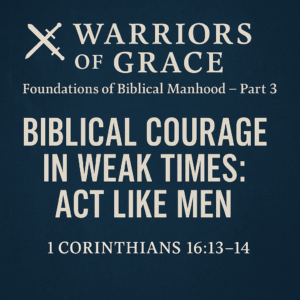⏱️ Estimated Reading Time: 3 min read
Organization, the Organism, and Serving
Orthodox Presbyterian Pastor and author R.B Kuiper, in his book The Glorious Body of Christ, writes that an organism “is something that is alive, as a plant, or animal or the human body. An organization although consisting of human beings, is itself not alive.”[i] In Scripture, the church is often referred in organic terms in that Christians are all members of one single body, the body of Christ (Romans 12:5). The church must be not only thought of as an organization but as an organism as well.
“A building is distinction from the human body, is not alive. When Jesus said; ‘Upon this rock I will build my church’ (Matthew 16:18), He was thinking of the church in that way. Hitherto an internal invisible kingdom had loomed large in His teaching: now He went on to speak of His church as an external organization.”[ii]
The trick then is to balance the organization and the organism aspects of the church so that, “its (the church’s) spiritual unity is a fact, on the other hand, that it may never cease striving toward the ideal of organizational unity.”[iii] Organization of the church must support the organism of the church. The balance of both of these views will not only provide for the physical needs of the church but the spiritual needs too. The organization acts as a clear artery or funnel for people to exercise their God-given abilities to magnify the Gospel for the Glory of God and the benefit of others.
Organization is distinct from providing structure. The two are different but complimentary. On a soccer field, the lines on the field provide the structure. However, as I’ve seen many times with my daughter’s soccer team, structure does not necessarily mean organization. Organization is the focused use of order to achieve the desired results within a structure. Without structure, organization has no idea how to achieve any goals. Without organization a structure becomes useless.
Consequently in the local church, serving needs organization to best utilize the context of the church. However, the church does not require organization for organization’s sake nor for some external appearance of order (as if merely aesthetic). The true function of an organization within the church is to set a framework from which people can worship; in this case through serving. The ultimate end is to point people to Christ.
Take what was happening in the early church as seen in Acts Chapter 6. Widows were being neglected because the pastors were trying to do too much on their own. Creating the first service team to provide food and care to these widows the church solved the problem. The pastors appointed seven men whose responsibility was to solve the problem and provide ongoing care so that the pastors could continue to focus on teaching.
Here written in Scripture is a prime example of balancing the organization and organism. The organization in Acts 6 opened up the church for the ministry of the Gospel. Not only did this allow for the church to care for their own members, but it also made it possible for the church to reach out to others (Acts 6:7). The church can use the gift of administration to organize people in ways that they can worship God by serving others, sustaining and building the organism.
[i] R.B Kuiper, The Glorious Body of Christ
[ii] ibid
[iii] ibid


